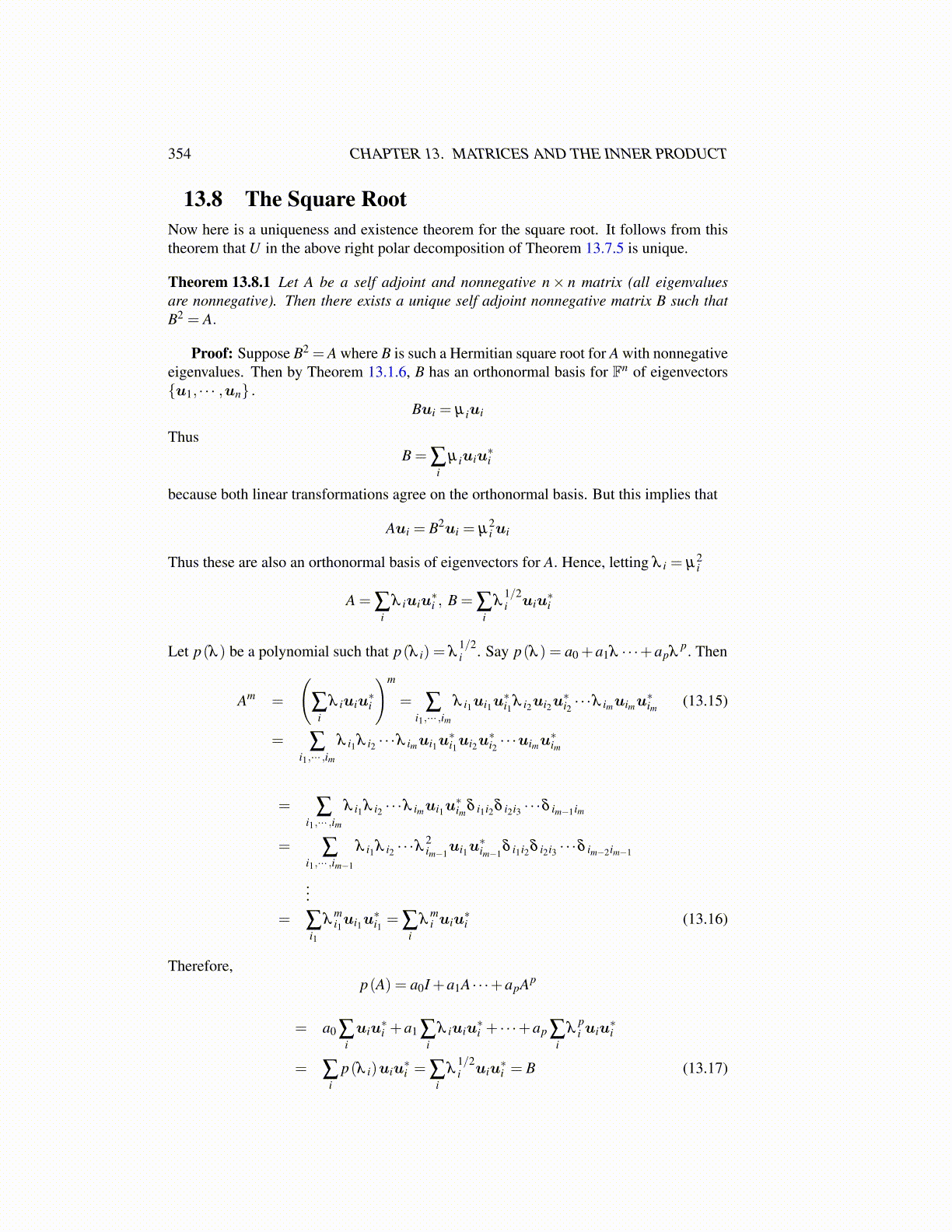
354 CHAPTER 13. MATRICES AND THE INNER PRODUCT
13.8 The Square RootNow here is a uniqueness and existence theorem for the square root. It follows from thistheorem that U in the above right polar decomposition of Theorem 13.7.5 is unique.
Theorem 13.8.1 Let A be a self adjoint and nonnegative n× n matrix (all eigenvaluesare nonnegative). Then there exists a unique self adjoint nonnegative matrix B such thatB2 = A.
Proof: Suppose B2 = A where B is such a Hermitian square root for A with nonnegativeeigenvalues. Then by Theorem 13.1.6, B has an orthonormal basis for Fn of eigenvectors{u1, · · · ,un} .
Bui = µ iui
ThusB = ∑
iµ iuiu
∗i
because both linear transformations agree on the orthonormal basis. But this implies that
Aui = B2ui = µ2i ui
Thus these are also an orthonormal basis of eigenvectors for A. Hence, letting λ i = µ2i
A = ∑i
λ iuiu∗i , B = ∑
iλ
1/2i uiu
∗i
Let p(λ ) be a polynomial such that p(λ i) = λ1/2i . Say p(λ ) = a0 +a1λ · · ·+apλ
p. Then
Am =
(∑
iλ iuiu
∗i
)m
= ∑i1,··· ,im
λ i1ui1u∗i1λ i2ui2u
∗i2 · · ·λ imuimu
∗im (13.15)
= ∑i1,··· ,im
λ i1λ i2 · · ·λ imui1u∗i1ui2u
∗i2 · · ·uimu
∗im
= ∑i1,··· ,im
λ i1λ i2 · · ·λ imui1u∗imδ i1i2δ i2i3 · · ·δ im−1im
= ∑i1,··· ,im−1
λ i1λ i2 · · ·λ2im−1
ui1u∗im−1
δ i1i2δ i2i3 · · ·δ im−2im−1
...= ∑
i1
λmi1ui1u
∗i1 = ∑
iλ
mi uiu
∗i (13.16)
Therefore,p(A) = a0I +a1A · · ·+apAp
= a0 ∑iuiu
∗i +a1 ∑
iλ iuiu
∗i + · · ·+ap ∑
iλ
pi uiu
∗i
= ∑i
p(λ i)uiu∗i = ∑
iλ
1/2i uiu
∗i = B (13.17)